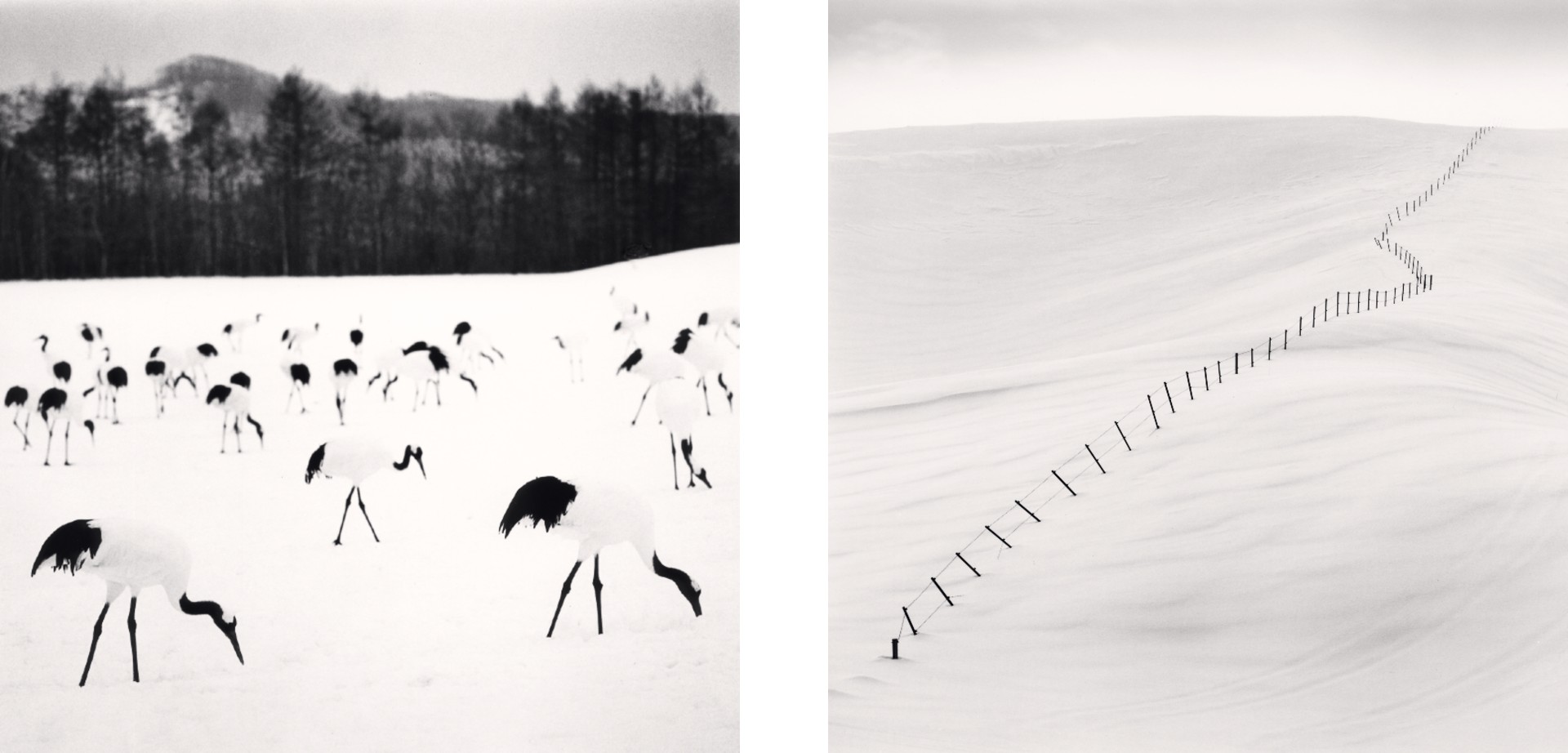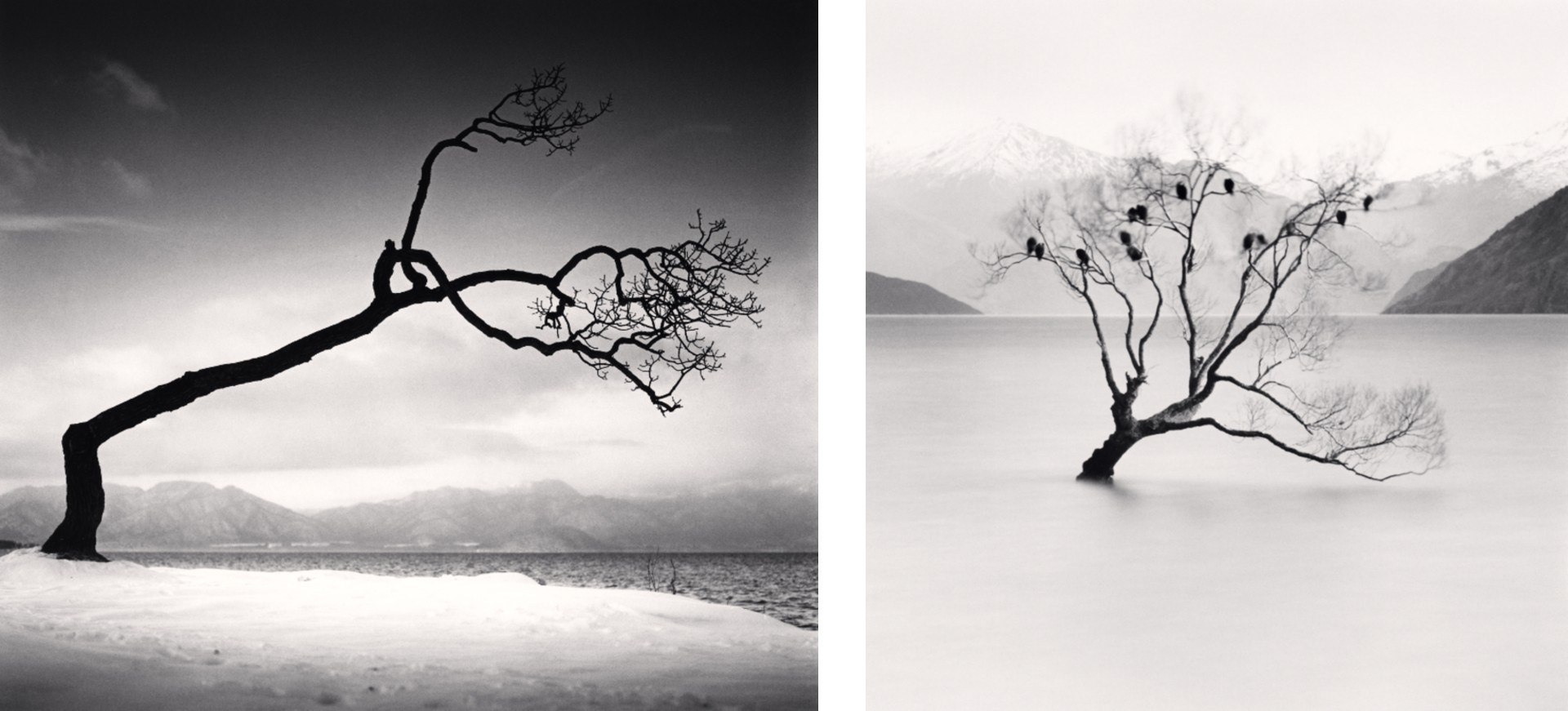In an era where cameras fire off 30 frames per second and computational photography happens in milliseconds, Michael Kenna still works the way he did in 1987: one frame, one night, sometimes ten hours of exposure. Which means his new exhibition at London’s Photographers’ Gallery, Shin Shin – arriving just as winter settles – offers something increasingly rare in photography. Work that asks you to slow down and look deeper.
The title comes from the Japanese onomatopoeia しんしん (shin shin), which describes the sound of deep, silent, falling snow. It’s an apt choice. Kenna’s photographs don’t just depict a particular type of weather; they embody the meditative stillness that drew him to Japan nearly four decades ago. And these aren’t, it must be stressed, quick captures. They’re the result of standing in the cold darkness for hours, waiting for his large-format 120mm camera to gather enough light to transform a scene into something otherworldly.
For photographers accustomed to checking histograms and chimping after every shot, Kenna’s approach will seem almost perversely old-fashioned. He works entirely in traditional silver gelatin printing, making every print himself in his Seattle darkroom. No digital manipulation, no preview screens, no instant feedback. This isn’t nostalgic stubbornness; it’s a deliberate artistic choice that forces a different relationship with both subject and craft.
Best picks for you
The technical demands of all this are substantial. Night exposures of this length require precise calculation, intimate knowledge of reciprocity failure, and absolute faith in your process. There’s no second-guessing, no quick reshoot if something goes wrong. You set up, expose, and trust.
The rewards, though, can be great. And in Kenna’s pictures, the prints carry a luminosity that digital sensors and inkjet printers struggle to match; a depth in the blacks and a glow in the highlights that comes from light actually interacting with silver halides in the darkroom.
Left: Flock of Red Crown Cranes, Tsurui, Hokkaido, Japan. 2005. Right: Hillside Fence, Study 7, Teshikaga, Hokkaido, Japan. 2004 (Image credit: Michael Kenna)
What’s particularly relevant is how they challenge our assumptions about what photography should capture. Kenna’s long exposures record details invisible to the human eye: the way moving clouds blur into ethereal streaks, how falling snow creates ghostly veils, the subtle tonal gradations in predawn darkness. These aren’t tricks or effects; they’re genuine visual information that only becomes visible through extended time.
I don’t think it’s a coincidence, by the way, that Kenna studied for the priesthood as a boy. Though he didn’t continue on that path, his work retains what he calls an appreciation for mystery and the unseen. His photographs of Japanese landscapes (snow-covered trees, minimalist compositions of natural and human-made forms) carry a contemplative quality that has more in common with meditation than with conventional landscape photography.
Where modern practice often emphasizes capturing the decisive moment or shooting until you get the perfect frame, Kenna commits to single images made over hours. It’s photography as a form of presence; a palate cleanser for anyone suffering from image overload.
This exhibition marks Kenna’s new representation by The Photographers’ Gallery, bringing his work into one of the world’s most respected photography institutions. Signed prints start at £1,975 plus VAT, with all proceeds supporting the gallery’s public programme. These aren’t decorative pieces; they’re collector-grade works from a photographer with prints in over 100 permanent institutional collections and five decades of exhibitions worldwide.
Left: Kussharo Lake Tree, Study 16, Kotan, Hokkaido Japan. 2009. Right: Wanaka Lake Tree, Study 2, Otago, New Zealand. 2013 (Image credit: Michael Kenna)
For anyone wondering if his approach has any relevance in the digital age, consider this. You might not wish to copy Kenna’s methods, but they do force you to see differently. These pictures require understanding light, exposure, and composition at a fundamental level. They demand patience and commitment. And they produce images that genuinely cannot be replicated with modern equipment shooting at modern speeds.
Shin Shin runs until January 25, through the depth of winter when London’s light becomes as spare and delicate as the Japanese landscapes Kenna photographs. It’s a chance to see work that proves slow photography isn’t just alive; it’s producing some of the most compelling images being made today.



